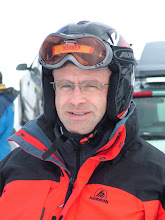
My experience as an educator is mainly related to my work in a Hungarian Catholic school after the fall of communist regime. I started teaching theology and philosophy in a brand new Jesuit middle and high school in 1998, and also for some years I worked in administration as the director of the boarding residence. As an educator responsible for boarding students, I had to look at our new educational organization from a particular perspective; namely, I had to perceive our school as a community based on mutual respect and collaboration. For instance, an important number of boarding children were aged from 11 to 14 years old, and first and foremost they needed a caring and safe community. Therefore, as educators, we were permanently challenged to re-create our role just from the beginning.
As a Jesuit educator I firmly believe that the human dignity of each member of our school community must be addressed with high respect and also with gratitude. Inspired by Jesus who's educator by excellence, I believe that everybody has to be regarded as a gift with his or her talents. Furthermore, I conceive my role of educator as a great honor because thereby it has been trusted to me the amazing opportunity to contribute to the personal growth of many children, colleagues and at some extent parents as well. Definitely, I am grateful to many of them for the challenges whereby they also contributed to my personal development as educator and as a Jesuit priest.
The Hungarian Jesuits started their school with the determination to serve the local community that had been just freed from the political oppression of communist regime and its ideology. Understandably, many people were looking for alternatives and so for organizations that may better serve their needs, and particularly those of their children. Consequently, the decade of the 90’s was a period of new hope and expectation as well as challenges for the Hungarian Christian communities. To respond to those challenges, the Jesuit community, newly reestablished in the country, founded a school in order to contribute to the spiritual and moral rebuilding of the Hungarian society. Of course, they were very optimistic, and even more were they so when many people joined the new educational project with perceptible enthusiasm.
The new school buildings were amazingly designed by a leading Hungarian architect, a great artist. Contrary to the factory like schoolhouse model, the new Jesuit school looks like a small Mediterranean town very attractive and also inviting people to live there. Even this time, the extraordinary feature of that built space continues to attract the interest of some educational researchers in the country. Some researchers are intrigued by the possible correlation between the aesthetics of the school building and its effects on the students, teachers, and parents.
Although the beauty of our “school town” and the given new opportunities for innovation, it took us a long time “to inhabit” our school, and it has been hard to get away from the Industrial-age thinking model, so well described by Peter Senge in
Schools that Learn. Personally, influenced by my experiences abroad, and as a Jesuit, I’ve never felt at ease with the “factory school” model. Thanks to my colleagues and to some inspiring parents as well as by learning from the feedback of my students I strove to fashion my educational vision and also by learning to alter my practice.
To serve better in our school, I introduced some new strategies like flexible classroom arrangement, collaborative activities in classes and working in learning oriented projects. As I really believe that after-school activities contribute to the education of the whole person development and also enhance the effectiveness of learning, I invited my students to participate in arts clubs, non-competitive sports, outdoor activities (experiential learning), and many volunteered for service learning activities in the local community (play rooms activities in the local Hospital for children, visiting senior citizens, and the like.). Peer tutoring was a very successful strategy mainly because a good number of my students were boarding in the residence. To develop community spirit, we took care of preparing good celebration in order to recognize everyone’s work. Of course as a Jesuit priest, I always cared for the spiritual needs of those working along with me. I have very good memories about our retreats, and about some of our pilgrimages when we visited significant spiritual places at home and elsewhere in Europe.
As regards technology, I lived as a “digital immigrant”, so did my students and fellow teachers. Of course, I am a "digital immigrant". I can say that we have used technology to some extent, but we never organized our teaching and learning activities around it. Nevertheless, our students are increasingly becoming “digital borne” and the number of "digital immigrants" is lessening. This challenge is surely going to change our school community very soon. With optimism and faith, I am looking forward to learn about how could I serve better.




